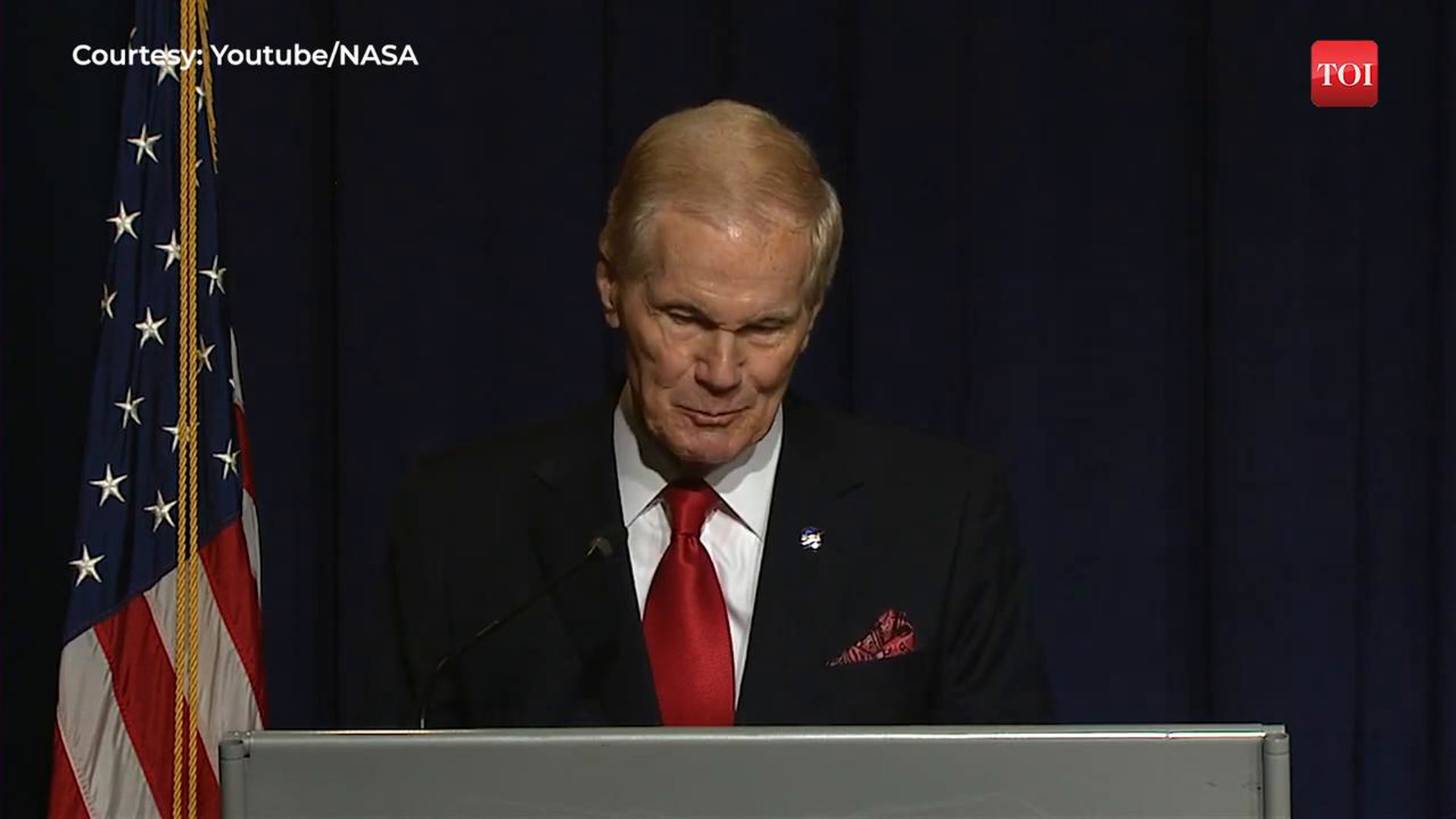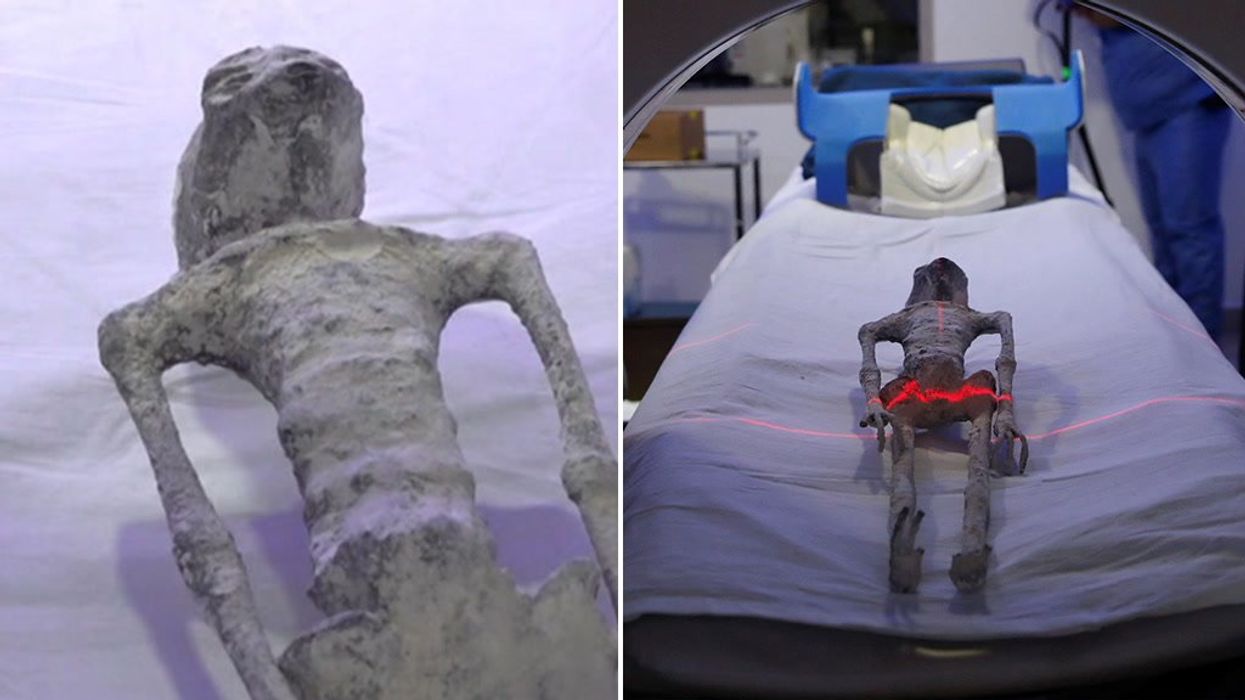Harriet Brewis
Sep 27, 2023
'Alien' remains undergo CT scan after being presented to Mexico's congress
Reuters
A key question underlies any search for life on other planets: how will we recognise it when we see it?
Despite what some so-called experts would have you believe, aliens are unlikely to look like bulbous-foreheaded gremlins à la Steven Spielberg’s E.T., which means we have to be a little more creative in our quest.
Fortunately, a group of US scientists have now developed an artificial intelligence-based system which they say is 90 per cent accurate in discovering signs of life, even if it may not initially appear as such.
In a press release for their work, which was published in the journal PNAS on Monday, the researchers explained that scientists have known for decades that mixing simple chemicals can form some of the more complex molecules needed for life, such as amino acids.
They also noted that many more of the components necessary for life, such as the nucleotides required to make DNA, have been detected in space.
And yet, so far, experts have struggled to work out whether these components are of biological origin or if they are generated by another non-biological process over time.
“Without knowing that, we don’t know if we have detected life,” they stressed.

However, lead researcher Robert Hazen, of George Mason University, said the new AI system developed by his team has offered a “significant advance in our abilities to recognise biochemical signs of life on other worlds. It opens the way to using smart sensors on unmanned spaceships to search for signs of life”.
He said in a statement: “We are asking a fundamental question; Is there something fundamentally different about the chemistry of life compared to the chemistry of the inanimate world? Are there ‘chemical rules of life’ that influence the diversity and distribution of biomolecules? Can we deduce those rules and use them to guide our efforts to model life’s origins or to detect subtle signs of life on other worlds? We found that there is.
“From an evolutionary point of view, life is not an easy thing to sustain, and so there are certain pathways which work and certain which don’t.
“Our analysis does not rely on absolute identification of a compound but determines biological/non-biological origins by looking at the compound in relation to the sample context.”
For their study, Professor Hazen and his colleagues used a form of chemical analysis called pyrolysis gas-chromatography mass-spectrometry (GCMS) to break down 134 carbon-rich samples from living cells, fossil fuels and other compounds and mixtures.
Fifty-nine of these were of biological origin (biotic) – including a grain of rice and a human hair, and 75 were non-biological (abiotic), such as lab-synthesised amino acids, or samples from carbon-rich meteorites.
Using a whole range of machine-learning methods, data from each sample were employed as training or testing subsets, resulting in a model that can now predict the abiotic or biotic nature of a specimen with more than 90 percent accuracy.

“There are some interesting and deep implications which flow from this work,” Prof Hazen said.
“First, we can apply these methods to ancient samples from Earth and Mars, to find out if they were once alive. This is obviously important for looking at whether there was life on Mars, but it can also help us analyse very ancient samples from Earth, to help us understand when life first began.
“It also means that at a deep level, biochemistry and non-biological chemistry are somehow different.”
He explained that this could enable us to differentiate a lifeform from another planet from the ones we know on Earth.
“This means that if we find life elsewhere, we can tell if life on Earth and other planets came from a common origin, or whether they would have come from different origins.”
He continued: “What really astonished us was that we trained our machine-learning method on only two attributes – biotic or abiotic – -but the method discovered 3 distinct populations – abiotic, living biotic, and fossil biotic.
“In other words, it could tell fossil samples from more recent biological samples. This surprising finding gives us optimism that other attributes such as photosynthetic life or eukaryotes (cells with a nucleus) might also be distinguished.”
In summary, this study is just the beginning of what may become a widely useful approach to teasing out information from enigmatic organic mixtures”.
Meanwhile, fellow astrobiologists have hailed the study as “very exciting,” with Professor Emmanuelle Javaux, of Belgium’s University of Liège, suggesting the AI system should be tested on some of the oldest and most dispute traces of Earth life as well as on modern and fossil organisms.
“This might help to solve some hot debates in our community,” he said.
Sign up for our free Indy100 weekly newsletter
Have your say in our news democracy. Click the upvote icon at the top of the page to help raise this article through the indy100 rankings.
Top 100
The Conversation (0)














